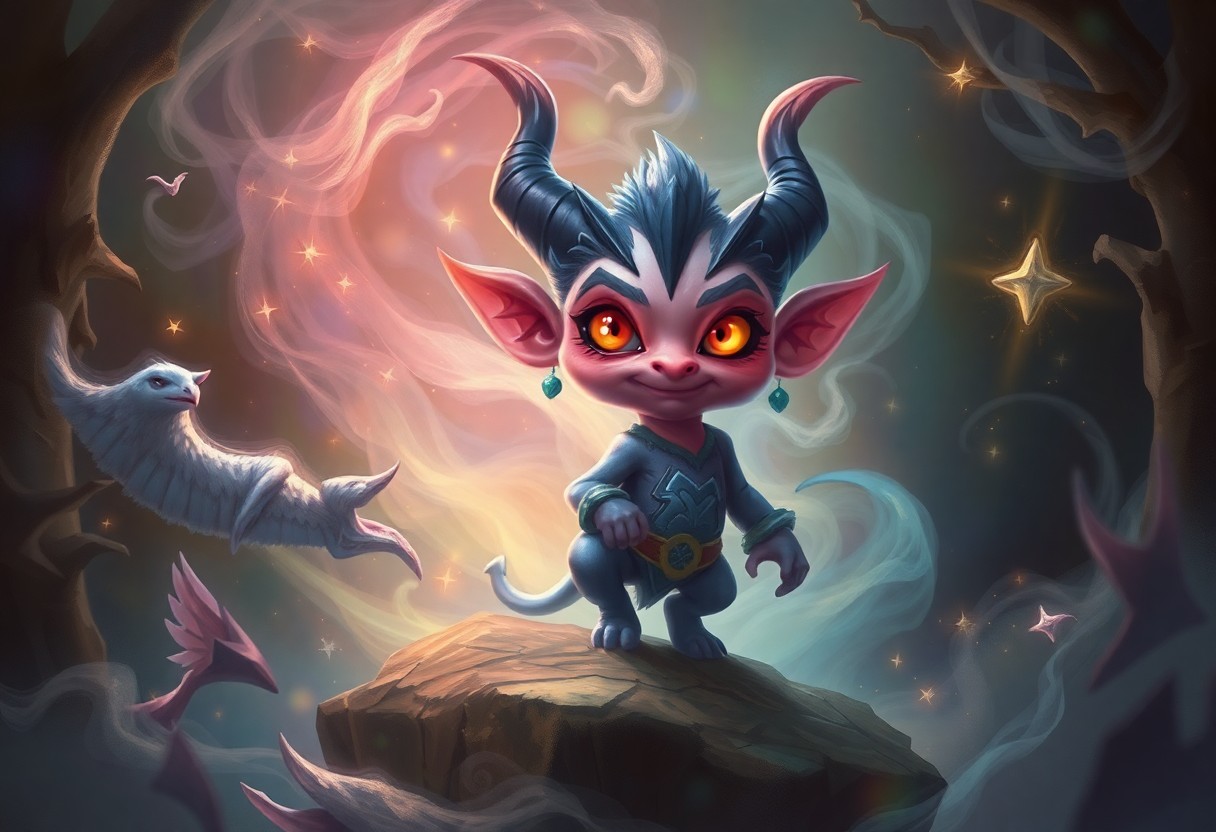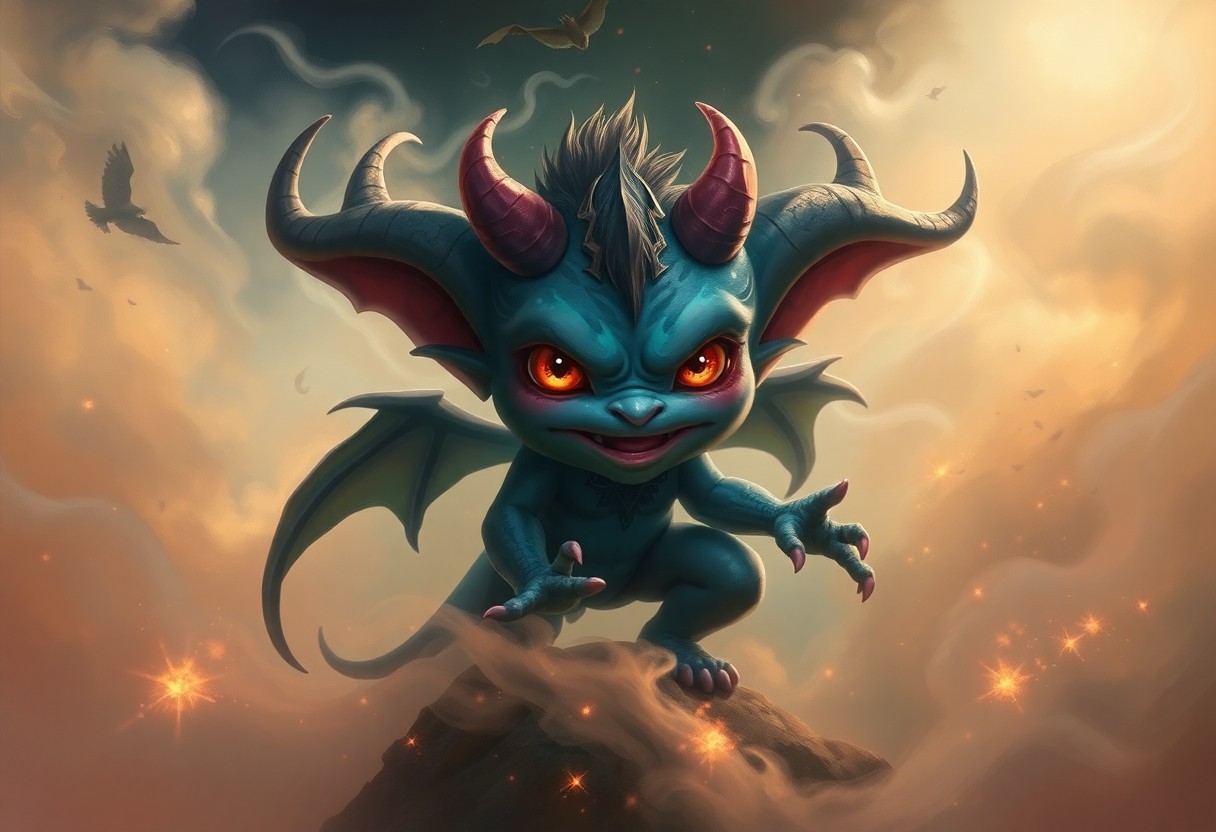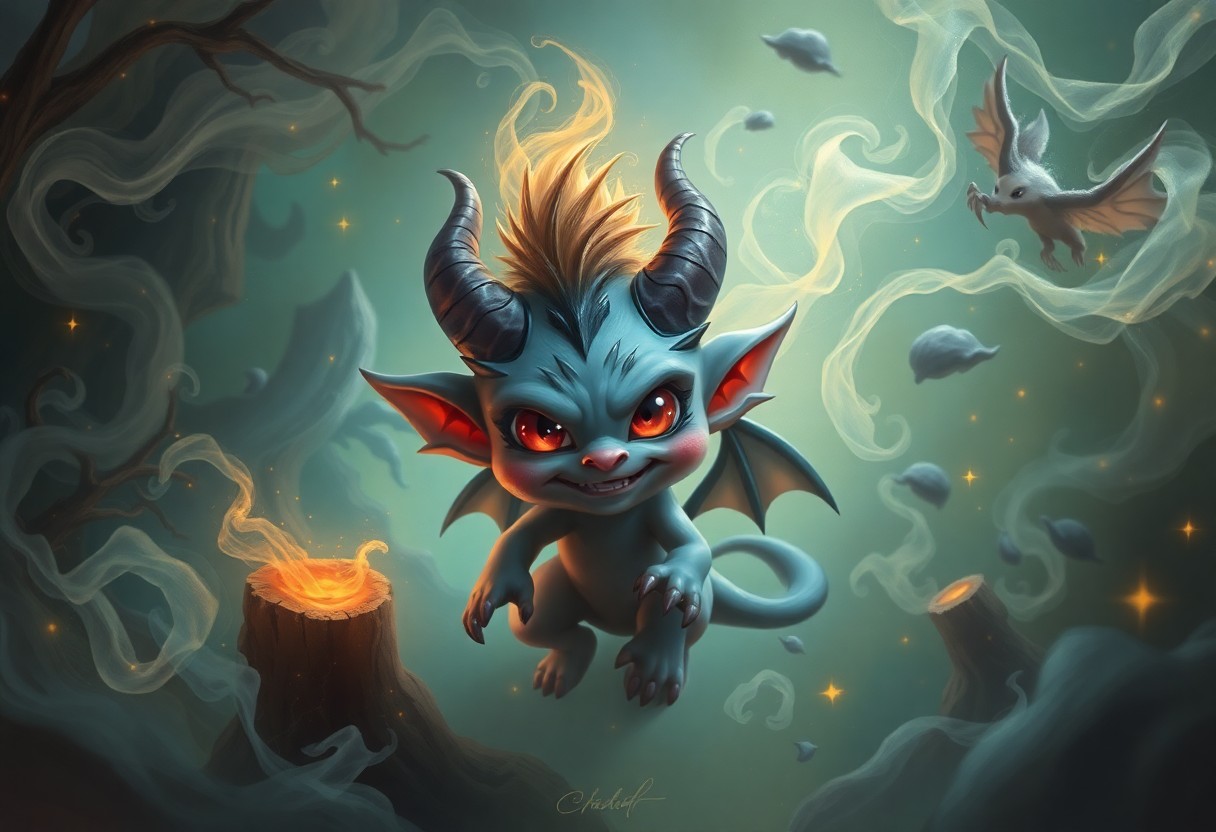Many cultures around the world have enchanting folklore, and one of the most captivating tales is that of Didko, the little demon of mischief. This mischievous character often finds ways to play tricks on unsuspecting individuals, leading to humorous situations. In this post, you’ll examine into the origins of Didko, explore his notorious antics, and understand how he has woven his way into various traditions. By gaining insight into this figure, you’ll not only enrich your knowledge but also discover how Didko continues to inspire fun and whimsy in stories today.

Origins of Didko
Before the tales of Didko spread across the lands, he was merely a whisper in the shadows of folklore. Your journey into understanding this mischievous little demon begins with the ancient stories passed down through generations, where Didko’s playful antics enchanted and bewildered villagers alike. These stories shaped his identity, solidifying him as a figure of both amusement and caution.
Folklore Background
Before you examine into Didko’s character, it’s important to explore the folklore that surrounds him. Didko emerged from Slavic tales, embodying the spirit of mischief that permeates playful folk narratives. These stories served as lessons, warning listeners of the unpredictable nature of life and the significance of embracing joy amid chaos.
Cultural Significance
One of the reasons Didko remains relevant today is his representation of whimsy and unpredictability within various cultures. By integrating his character into local traditions, people found a way to connect with their heritage and reflect on the social dynamics that shape their communities.
For instance, Didko’s playful spirit is celebrated during festivals, where villagers partake in games and light-hearted competitions, reminding each other not to take life too seriously. As you engage with Didko’s story, you not only appreciate the rich tapestry of cultural narratives but also find a way to connect with others through shared laughter and playful mischief. His legacy lives on, encouraging you to celebrate the lighthearted moments amidst life’s challenges.

Characteristics of Didko
Clearly, Didko embodies an array of characteristics that make him a captivating figure in folklore. This little demon of mischief is not just about causing chaos; he possesses features and personality traits that set him apart from the typical representations of demons. Understanding Didko’s characteristics gives you insight into his playful yet cunning nature, contributing to his reputation as a trickster who thrives on cleverness and deception.
Physical Appearance
One cannot help but notice Didko’s striking physical appearance, which enhances his mischievous aura. Standing at a mere foot tall, he boasts pointy ears, bright red skin, and a tuft of wild, spiky hair. His eyes are large and twinkle with mischief, drawing you in while warning you of his trickster nature. He often wears a tattered little cloak, adding to his enigmatic charm and serving as a perfect disguise when he plays his pranks.
Personality Traits
Didko is known for his playful and mischievous demeanor, always eager to stir up trouble. His love for pranks is evident in his antics, often targeting unsuspecting humans who unknowingly become part of his playful schemes. You will find that Didko thrives on laughter, finding joy in the reactions of those he teases. Beneath this playful exterior, however, lies a clever intellect, making him a formidable opponent when engaged in riddles or games.
To truly appreciate Didko’s personality, you must understand his dual nature. While he revels in trickery and chaos, he also possesses a sense of loyalty to those who embrace his playful spirit. He often befriends those who share a sense of humor and creativity, drawing you into his world where laughter reigns supreme. His unpredictable behavior keeps you on your toes, allowing for unexpected twists and turns that make every encounter with him a delightful adventure.
Mischief and Pranks
Now that you’ve been introduced to Didko, the charming little demon, let’s explore the delightful realm of mischief and pranks. These playful antics not only keep you on your toes but also embody the spirit of youthful exuberance. Didko thrives on light-hearted tricks that bring laughter and joy, inviting you to revel in the innocent mischief that brightens every day. Each prank is a reminder that even in the ordinary, there’s a chance for the extraordinary as laughter fuels the magic of Didko’s world.
Common Tricks
For those eager to examine Didko’s playful world, common tricks typically involve harmless antics such as hiding everyday items or creating funny sounds to startle and amuse your friends. You might tape down a chair so it unexpectedly moves or put a fake spider in someone’s bag. The goal isn’t to annoy but rather to inspire shared laughter and create lasting memories. You’ll find that these small acts of mischief often forge stronger bonds among peers.
Impact on Society
After indulging in Didko’s mischievous nature, you may notice a ripple effect on your surroundings. Mischief and pranks, while seemingly trivial, play a role in fostering community spirit, encouraging creativity, and promoting social connections. You find that laughter and shared experiences can unite individuals, lightening the mood and breaking down social barriers.
Impact your understanding of societal interactions as you witness how mischief fosters camaraderie and creativity. Your engagement in playful pranks generates laughter, which is vital for mental well-being. You’ll notice that these light-hearted moments allow people to let go of daily stresses, prompting more open connections. In this way, Didko’s mischief not only enhances personal relationships but also cultivates a sense of community, transforming the mundane into the extraordinary.
Didko in Popular Culture
Your fascination with Didko extends beyond folklore and into various aspects of popular culture. Whether in literature, art, or modern media, this little demon of mischief has captured imaginations, leading to a range of interpretations and adaptations that reflect both his playful nature and mysterious allure. By exploring these representations, you can gain richer insights into how Didko influences creative expression across different platforms.
Literature and Art
After centuries of storytelling, Didko has appeared in numerous books and artistic works, often embodying themes of chaos and whimsy. Writers and artists have interpreted Didko in myriad ways, from mischievous side characters in children’s stories to symbolic figures representing the unpredictable aspects of human nature. These varied portrayals invite you to explore the diverse narratives surrounding this intriguing figure.
Media Representations
About the modern interpretation of Didko, he has found a home in animated series, video games, and even fashion. Each representation infuses a fresh perspective on this timeless character, showcasing his charm while emphasizing his role as a disruptor. Through these mediums, you can experience Didko’s character in dynamic and engaging ways, further deepening your appreciation for this little demon of mischief.
Plus, the evolution of Didko in media serves as a testament to his enduring popularity, enabling you to witness his transformation across different generations. In animated shows, he often brings humor and light-hearted mischief, while in video games, he may take on more complex roles that challenge players with clever puzzles and unexpected twists. This versatility in representation allows Didko to remain relevant today, keeping your interest alive and inviting new audiences to discover the delightful chaos he embodies.
Lessons from Didko
After exploring Didko’s antics, you may find that there are valuable lessons hidden in his mischievous behavior. This little demon teaches you that sometimes, embracing a bit of playfulness can help relieve stress and spark creativity. His adventures remind you not to take life too seriously and encourage you to find joy in the unexpected twists and turns of daily life.
Moral Teachings
On the surface, Didko appears to embody chaos, but you will discover deeper moral lessons in his escapades. His journeys reveal the importance of balance between order and mischief, teaching you that a playful approach to challenges can lead to innovative solutions and foster stronger relationships with others.
Application in Modern Life
Behind Didko’s playful demeanor, there lies a blueprint for incorporating lightheartedness into your everyday routine. In a world dominated by deadlines and obligations, you can learn to infuse some of Didko’s spirit into your life, encouraging spontaneity and laughter even amidst the mundane.
Plus, creatively integrating Didko’s wisdom can improve your overall well-being. Embracing a playful mindset allows you to tackle stress more effectively, promotes brainstorming and collaboration at work, and even nurtures connections with friends and family. By allowing a bit of mischief into your life, you open the door to new perspectives, enhancing not just your creativity but also your personal growth. Don’t shy away from lightheartedness; instead, see it as an important tool for navigating the complexities of modern living.

Comparisons with Other Mythical Figures
Unlike many other mythical figures, Didko holds a peculiar place within folklore that sets him apart. Below is a comparison table that highlights some of these differences.
| Figure | Characteristics |
|---|---|
| Didko | Playful, mischievous, often causing minor trouble |
| Loki | Complex, sometimes malevolent, often causing chaos |
| Raven | Sky deity, clever, often rebelling against authority |
Similarities to Other Tricksters
At first glance, you may find similarities between Didko and other trickster figures across various cultures. Tricksters like Loki, for example, share Didko’s penchant for mischief and playful deceit. These figures often serve as a reminder of the chaos inherent in life, helping you to question societal norms through their antics.
Unique Attributes of Didko
By diving deeper into Didko’s character, you’ll discover traits that make him unique compared to other tricksters. He embodies a spirit of lightheartedness, welcoming small chaos rather than malevolence. This sets him apart from darker figures like Loki, making him more relatable and appealing to a broader audience.
With his childlike curiosity and unassuming nature, Didko encourages you to embrace the lighter side of mischief. Unlike tricksters who may have a darker agenda, Didko thrives on fun and creativity, turning mundane moments into opportunities for laughter. His interactions often spark joy and reflection, inviting you to view life’s quirks with a sense of wonder and amusement.
Summing up
Now that you’ve explored the enchanting world of Didko, the Little Demon of Mischief, you can appreciate the blend of charm and chaos that this character embodies. His playful antics not only entertain but also impart valuable life lessons about the balance of fun and responsibility. As you navigate stories involving Didko, consider how his mischievous spirit can inspire creativity and laughter in your own life, while also reminding you of the importance of consideration for others around you.





